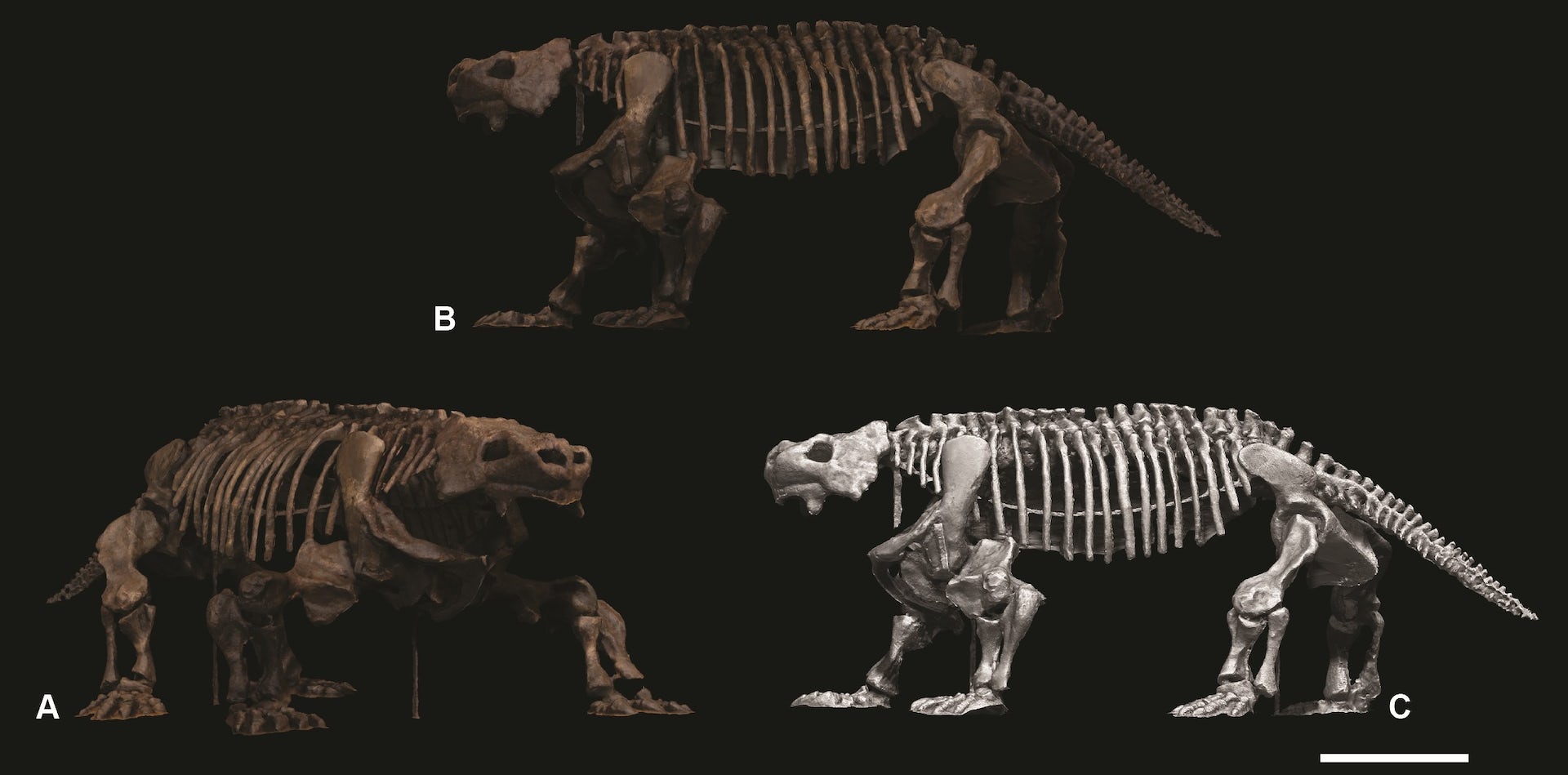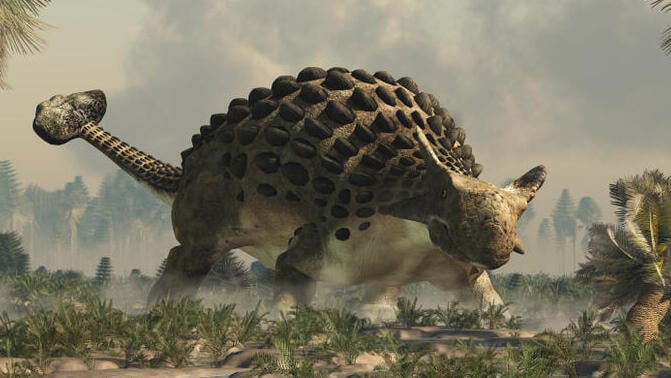Our examine gives a complete, international evaluation of the effectiveness of Protected Areas (PAs) in conserving reptiles and amphibians at present and within the face of future local weather change over the course of the continued century. It’s important to emphasise that amphibians and reptiles have the best proportions of threatened species amongst land vertebrate (tetrapod) teams. Understanding the effectiveness of present PAs as a cornerstone method for the safety of species liable to impacts from local weather change is extensively thought to be probably the most vital challenges to develop efficient conservation methods aimed to safeguard biodiversity52,53, particularly amongst extremely threatened organisms. Our findings present global-scale proof for the essential position that PAs play in conserving the biodiversity of amphibians and reptiles beneath human-induced local weather change situations. We additionally crammed present gaps within the English-language species distribution knowledge by including info from different areas, particularly South America, Africa, the Center East, Central Asia, Russia, Pakistan and China.
Our examine reveals that the proportion of amphibian and reptile habitats contained inside PAs is anticipated to extend beneath local weather change throughout the globe and in most continents (Fig. 2B, and Supplementary Figs. 9–12). We recommend that the mechanism behind this result’s that habitats exterior PA boundaries will likely be misplaced because of local weather change at a better price than habitats inside PAs (see under). Due to this fact, the proportion of the remaining habitats that fall inside PAs will likely be larger after local weather change than earlier than. Moreover, we discovered that the proportion of species which have benchmark quantities of habitat (e.g., 15% or 30% of habitat protected) in PAs will enhance beneath local weather change (Fig. 2C, and Supplementary Figs. 9–12). This doesn’t imply that the proportion of habitat inside PAs is adequate to maintain demographically viable populations of amphibians and reptiles globally, nor that the areas of appropriate habitat will enhance in PAs, contemplating usually the low dispersal capabilities of those two teams. As an alternative, these findings counsel that bigger habitat areas exterior the PA community could also be degraded because of the synergistic interactions of local weather change with the panoply of different threats (e.g., land conversion, extractive makes use of of pure sources) that may be constrained inside PAs, thus making present PAs much more vital for amphibian and reptile species’ survival sooner or later. Noteworthy, we projected species distribution with out contemplating the dispersal capability of species, and this projection could underestimate vary expansions of species beneath local weather change. The significance of PAs beneath local weather change has additionally been noticed throughout different taxa together with a number of invertebrate teams and endotherms (birds and mammals)54,55 particularly when PAs are adequately managed55. The unfavourable impact of local weather change on chicken species’ distributions in Britain, Finland and the savannah area of Africa, for instance, might probably be buffered by PAs21,54,56.
Some continental and regional scales research have reported reverse patterns. For instance, present PAs could turn into much less efficient beneath local weather change for conserving amphibian biodiversity in Italy57, vegetation in Europe23, and birds in South Africa22 and Southeast Asia58. The discrepancies amongst empirical research are possible as a result of the safety provided by PAs for species varies amongst taxa and regions59. In our examine, for instance, we discovered that PAs would turn into simpler for amphibians, however much less efficient for reptiles in South America beneath RCP 2.6 and 4.5 (proportion of species with 30% of habitat protected), and simpler for each amphibians and reptiles in Africa (Supplementary Fig. 16). As well as, this discrepancy may additionally be attributable to completely different conservation targets and RCP situations. For instance, European PAs are predicted to turn into simpler for reptiles beneath all 4 RCPs situations when the goal is 15% of species habitat inside PAs, whereas Europeans PAs can be much less efficient beneath RCPs 2.6 and 4.5 when the goal strikes to 30% (Supplementary Fig. 16). General, most regional research are according to our outcomes displaying that PAs will likely be critically vital to guard herpetofauna beneath local weather change globally, regardless of variation in geographical focus, taxonomic teams explored, PA varieties, conservation goal scopes, and local weather situations variations.
One of many potential explanations for the growing effectiveness of PAs is that the local weather is much less excessive inside PAs than exterior (Supplementary Fig. 20). For instance, native extinctions are anticipated to happen quicker in extraordinarily high temperature regions13, and most PAs are related to a decrease price of local weather change53,60 which can mitigate local weather change impacts for communities inside PAs60. Moreover, precipitation in PAs is larger than exterior and is predicted to extend sooner or later (Supplementary Fig. 20). Earlier research have discovered that precipitation is very correlated with reptile and, particularly amphibian distribution and abundance61,62,63. This, along with the comparatively gentle local weather inside PAs could mitigate the unfavourable impacts of local weather change on species60,64,65. Nonetheless, over 300 amphibian and 500 reptile species are predicted to go extinct because of local weather change over the course of the continued century. These weren’t counted once we calculate the proportion of species lined in PAs sooner or later, therefore our discovering—that a big majority of species will likely be protected sooner or later pertains to surviving species and shouldn’t be taken to imply that local weather change won’t have devastating results on many amphibian and reptile species.
Our proof exhibits that the present international community of PAs already performs an vital position for the conservation of present amphibian and reptile international biodiversity, and can proceed to take action beneath predicted future local weather. Nonetheless, many species don’t happen inside present PAs. These embrace many amphibians and reptile species distributed in Mexico, Jamaica, the Andes Mountains, western Africa, South Africa, the south and north coast of Turkey, Yemen, western Iran, and the jap Papua New Guinea (Supplementary Figs. 21 and 22). Moreover, extra conservation gaps are recognized in southern USA, Ethiopia, northwestern Congo for amphibians, and Argentina, Somalia, India, Australia for reptiles (Supplementary Fig. 22). Moreover, we didn’t analyze 36.4% and 23.6% of worldwide amphibian and reptile species given the restricted availability of sturdy distributional knowledge (a lot of that are prone to have ranges solely exterior of PAs). On the whole, unprotected species have small geographic vary and urgently must be lined by PAs (Supplementary Fig. 23), on condition that small-ranged species are disproportionately threatened6,66,67, and are beneath excessive extinction dangers because of local weather change68.
As well as, we discovered that over 70% and 77% of amphibian and reptile species, respectively, have beneath 15% of their vary occurring throughout the boundaries of strict PAs at current and sooner or later (Fig. 2C). This share enhance to 88.1% and 91.8% of amphibian and reptile species, respectively, once we use a threshold of a minimum of 30% of the vary in PAs (Supplementary Fig. 9). Thus, a strategic enlargement of PA networks for these organisms is urgently wanted.
The areas of land in PA standing will increase 1.2 instances once we broaden our focus from present strict PAs (Class I to IV) to embody all PAs (Class I to VI). Because of this, the proportion of species with >15% or >30% of their habitat in PAs would will increase by 1.2–2.0 instances and by 2.1–3.4 instances at current and beneath future local weather circumstances, respectively (Supplementary Figs. 9 and 12). This means that the administration of much less strictly protected PAs (Class V and VI) is of paramount significance for growing the safety effectiveness of PAs in defending the herpetofauna globally. Certainly, earlier research have proven that PAs administration contributes considerably to conservation. As an example, energetic administration of PAs enhances metapopulation enlargement of Hesperia comma beneath local weather change55, and PAs managed for international waterbirds and their habitat usually tend to profit populations than are unmanaged PAs69.
Our examine discovered that conservation gaps have been primarily concentrated in tropical and subtropical moist broadleaf forests (45.9% and 31.6% of vary for amphibians and reptiles beneath RCP 4.5; Supplementary Fig. 24). Such forests are characterised by low variability in annual temperature, excessive ranges of rainfall and wealthy tree communities, which all contribute to the excessive ranges of amphibian and reptile range present in these areas70. The enlargement of the worldwide PAs community in these areas is critical to guard their wealthy and distinctive herpetofauna. The unprotected areas (Fig. 3C, D), i.e., the areas we recognized as key conservation gaps, have additionally been recognized as being globally important for different taxa67,71. These areas must be the precedence areas for future PA changes to higher preserve biodiversity72.
The broad distribution of amphibians and reptiles could result in some areas being ignored. Thus, analyses of conservation gaps on the nation scale will contribute to higher biodiversity safety and administration, together with a extra environment friendly allocation of conservation resources67. We discovered massive conservation gaps for amphibians and reptiles in nations reminiscent of Brazil, Mexico, Colombia, South Africa, India, Myanmar and China (Figs. 3E and 3F, Supplementary Information 6). These will not be high-income nations, which can have an effect on the quantities of sources obtainable for conservation actions (Supplementary Fig. 25). This can be a basic battle between biodiversity conservation and financial development73,74. Surprisingly, some high-income nations even have massive gaps, reminiscent of Canada for amphibians, and the USA and Australia for each amphibians and reptiles. These three nations are massive, and increasing PAs to embody extra conservation areas must be simpler to perform than in these nations with small land areas or low revenue. Our maps could assist nations fulfill their Put up-2020 World Biodiversity Framework75.
World amphibian and reptile biodiversity is projected to say no considerably beneath ongoing local weather change. Given these alarming expectations, our discovering that almost all amphibian and reptile species that can survive local weather change have a minimum of a part of their ranges positioned throughout the present PA community provide promising situations that reinforce the efficient results that laws has on the mitigation of extinctions worldwide. We additionally predicted that the share of species’ ranges inside PAs will enhance beneath local weather change. That is largely a operate of upper predicted charges of habitat loss because of local weather change exterior PAs versus inside PAs. Nonetheless, our fashions nonetheless predict that a whole bunch of species from each courses of ectotherms will likely be misplaced to local weather change each in reserves and, particularly, exterior of them. Furthermore, many species are solely present in reserves with low levels of safety from anthropogenic disturbance (i.e., sort V and VI reserves). Thus, our findings shouldn’t be interpreted as a trigger for complacency. We recognized present PAs which want enlargement to cowl susceptible species that could be significantly delicate to local weather change. Present PAs already present vital refuges for the conservation of herpetofauna beneath future local weather change situations, however their conservation effectiveness may very well be additional enhanced by higher safety in less-strict PAs and the institution of (strict) reserves within the conservation hole areas we’ve recognized. As well as, extra prevalence data collected for data-deficiency species in future and the replace of PAs from the WDPA database could affect species distributes in PAs and due to this fact optimum conservation plans. Lastly, it’s essential to focus on that one potential caveat with the current examine is that many uncommon, small-ranged, species have been excluded from our analyses as they at present lack adequate distributional data to assemble SDMs. Most of those unanalyzed species, 70.5% of amphibians and 64.7% of reptiles, are assessed as threatened or knowledge poor based on IUCN (in comparison with solely 22.9% of amphibians and 16.3% of reptiles included in our dataset). Consequently, additional consideration to the plight of those species is thus wanted when the significance of PAs for his or her conservation is assessed sooner or later, as a result of these species usually tend to be at a excessive extinction threat.

